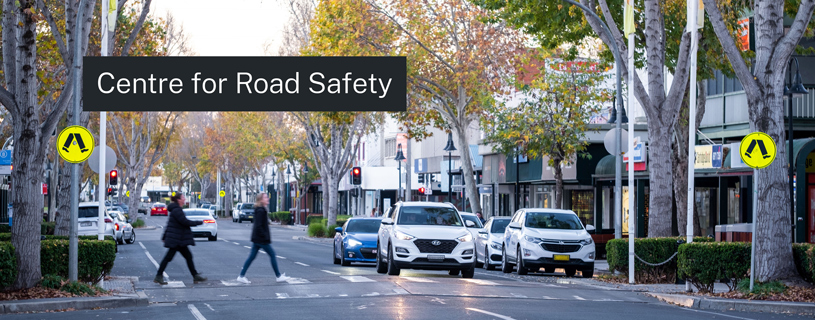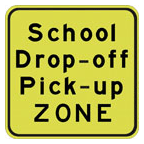School safety
School safety
School-age children might seem independent, but they still need a hand. Young children learn how to safely use the road from you. The habits they learn stay with them when they’re old enough to travel alone.
Walking to and from school
- Plan your trip to school so you're using pedestrian crossings where possible.
- Always hold your child's hand up until they're at least 8 years old. Young children need your help to recognise danger such as vehicles coming out of driveways. They can also be easily distracted and wander into traffic.
- Up until at least 10 years old, supervise your child very closely, holding their hand when crossing the road. If you cannot be with your child, organise for another trusted adult to accompany them.
- Drop off and pick up your child near the school gate and never call them from across the road. Explain to your child the Stop, Look, Listen, Think method and practise it together every time they cross the road:
- Stop one step back from the kerb
- Look both ways continuously
- Listen for the sounds of approaching traffic
- Think whether it's safe to cross and keep checking until you're safely across.
Find out the difference between pedestrian crossings and children's crossings via our pedestrian safety page.
Image
Image controls:
Driving to and from school
- Make sure your children are in the correct child car seats for their height and age. To be effective, child car seats need to be fitted and used correctly.
- Drive under the 40km/h speed limit in school zones as these are the busiest times and places.
- Give way to buses pulling out – watch for bus flashing lights.
- Always park and turn legally around schools. Avoid dangerous manoeuvres like U-turns and three-point turns.
- Always give way to pedestrians, especially when entering and leaving driveways.
- Drop off and pick kids up on the school side of the road in your school's designated drop-off and pick-up area. Never call out to children to cross the road.
- Make sure kids get out of the car on the kerb side of the road to be away from passing traffic.
Image
Image controls:
Getting the bus
- Always meet your child at school or the bus stop. Never wait on the opposite side of the road and call them across.
- Always hold your child's hand up until they're at least 8 years old when walking to and from the bus stop or interchange and when crossing the road. Up until at least 10 years old, supervise your child very closely, holding their hand when crossing the road. If you cannot be with your child, organise for another trusted adult to accompany them.
- Wait until the bus has gone then use a safe place to cross the road
- Encourage your child to take a seat quickly when they get on the bus and to buckle up if the bus has seatbelts.
Bus safety for school students has more information on how families can help keep children safe getting on and off buses.
Image
Image controls:
Keeping children safe in the road environment
Our range of fact sheets have safety information that includes walking together safely, driving and parking safely near schools, 40km/h school zones and helping children around buses.
Drop-off and Pick-up initiative
Some schools and councils use No Parking areas that have signs marked as Drop-off and Pick-up, Kiss and Ride or Kiss and Drop zones. These give parents and carers an area on the school side of the road to drop off and collect their children by car.
The Drop-off and Pick-up initiative allows:
- You to drop off or pick up students legally within the zone. You have a 2-minute timeframe at busy times at the beginning and end of the school day to do so.
- A volunteer adult supervisor to marshal the students at the designated school gate.
- A volunteer adult supervisor to help the student exit or enter the vehicle.
These zones reduce traffic and illegal parking, provide adult supervision, allow smaller children to remain secured in the car during drop off and pick up and reinforce road safety for all.
Drop-off and Pick-up initiative set up
To set up the initiative, schools need to:
- reach an agreement with the school community
- consult with the local council to determine if the school environment is suitable
- make a roster of volunteers to be zone supervisors
- develop policies and procedures to carry out the initiative
- fully understand all legal issues regarding liability in respect of students and volunteers.
Drop-off and Pick-up initiative documents
- Organising a school 'Drop-off and Pick-up' initiative (PDF, 278.47 KB)
- Drop off and Pick Up - Parent letter (DOC, 2.41 MB)
- Drop off and Pick up - Safety tips (PDF, 290.06 KB)
More information
Road safety education for Primary Schools
Early Childhood Road Safety Education Program
Road rules and advice to help pedestrians stay safe on NSW roads and shared paths.
Road safety information and advice for parents and carers to help teach their children about playing, riding and walking safely in NSW.
Whenever children are in a car, they must be safely buckled up in child car seats that are correct for each child’s age and size.




